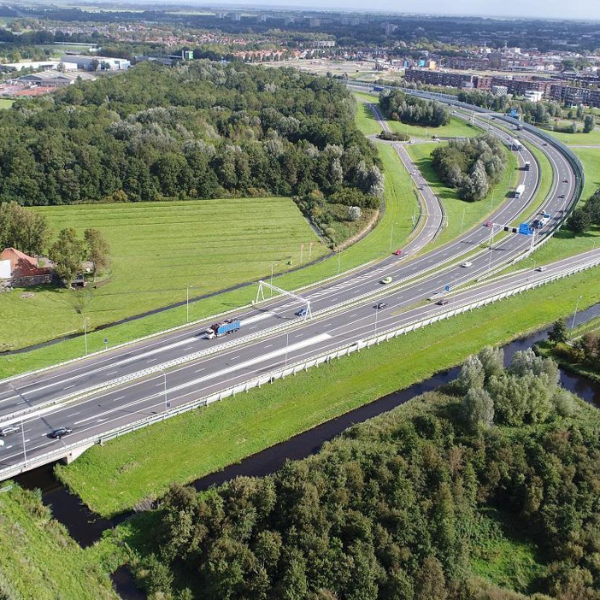Working on accessibility and quality:
A7/A8 Amsterdam - Hoorn

Witteveen+Bos is working together with partners on the plan development for the A7/A8 Amsterdam-Hoorn motorway. Our objective and ambition is to improve accessibility while also considering sustainability, spatial quality and the living environment. Due to several major challenges in the design, the plan development is taking longer than anticipated. At the same time, this provides the opportunity to improve the design and broaden the scope of the integrated approach. This includes significant attention for issues such as biodiversity and opportunities in the surrounding area that can be tackled simultaneously.
Background: assignment from Rijkswaterstaat
Rijkswaterstaat commissioned Witteveen+Bos, in collaboration with BoschSlabbers and AT Osborne, to carry out the plan development for the A7/A8 Amsterdam-Hoorn motorway. Accessibility in the corridor is under pressure, and research shows that traffic congestion between Amsterdam and Hoorn has increased significantly since 2020.
In 2019, the measures to be taken to improve traffic flows were broadly outlined in a spatial planning strategy. They are part of a broad package aimed at improving the highway network as well as the cycling and public transport networks.
Witteveen+Bos is developing the measures for the highway network further, including the widening of different sections and the construction of rush-hour lanes, the opening of additional lanes in the Coen Tunnel, and improvements to the Zaandam interchange. The goal of the assignment is to arrive at a definitive route or project decision. The assignment includes the design process, various studies, the environmental impact assessment, the landscape plan, and support of the local area process.
Spatial quality and added value
A challenge and ambition within this project is giving spatial quality its rightful place, in particular because the route cuts through two UNESCO World Heritage Sites: the Defence Line of Amsterdam and the Beemster Polder. In order to approach this properly, we are collaborating with the landscape architects at BoschSlabbers. The aim is to strengthen the heritage sites in combination with improvements to the road.
We also have the ambition, together with Rijkswaterstaat, to create added value through the local area process. We are collaborating with AT Osborne for the assignment’s engagement and stakeholder management. Together with the other parties involved, we are making an inventory of the opportunities to improve spatial quality, sustainability and the quality of the living environment, so that these can subsequently be taken advantage of. Biodiversity around the road can be strengthened, for example, with ecologically valuable verges and roadside ditches, and by improving flight routes for bats.
More information?
